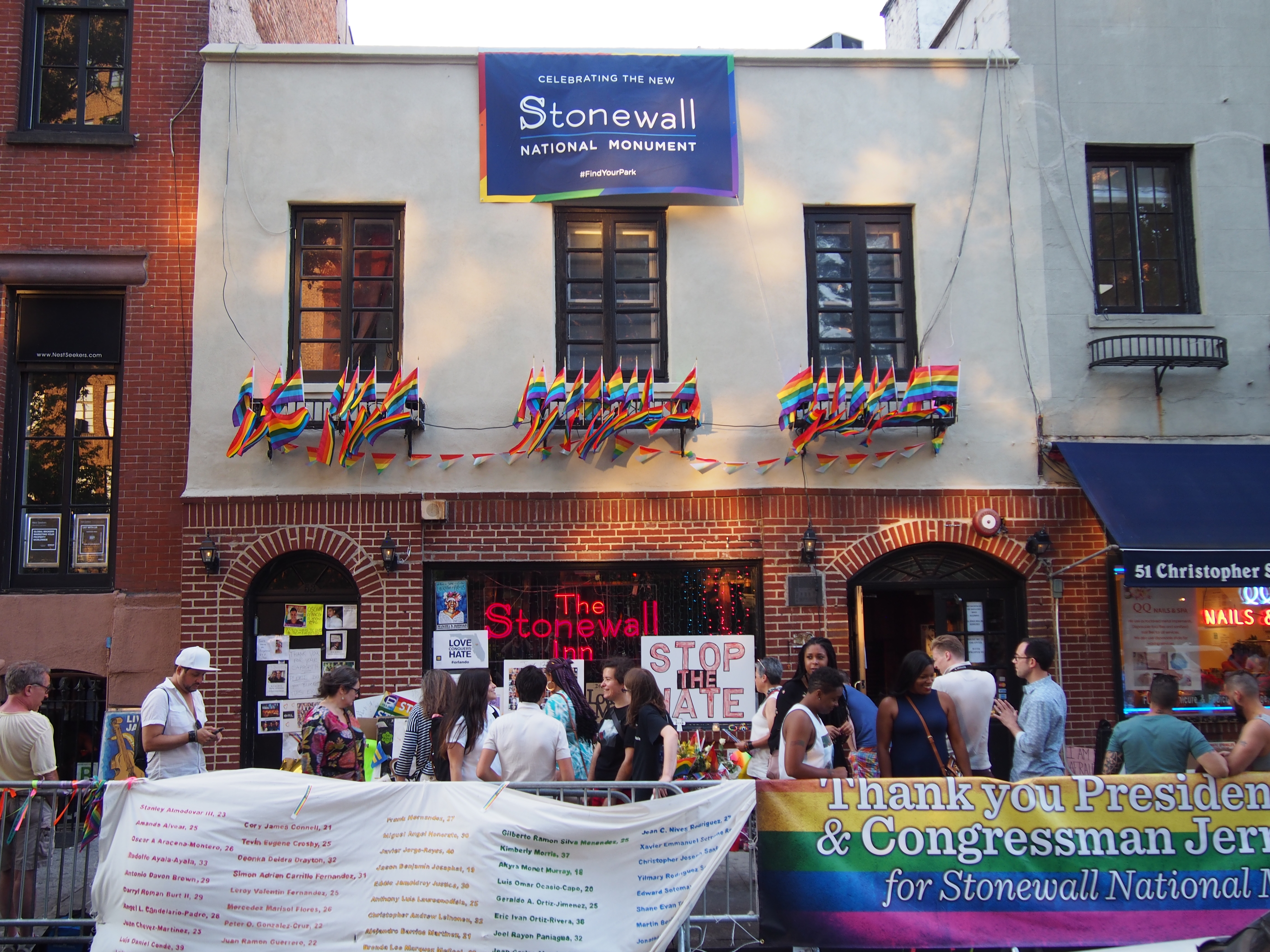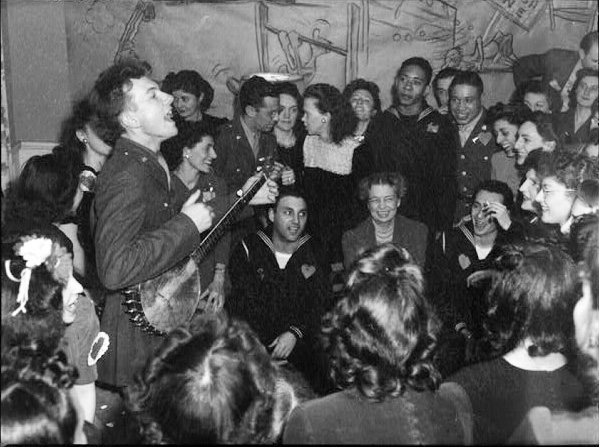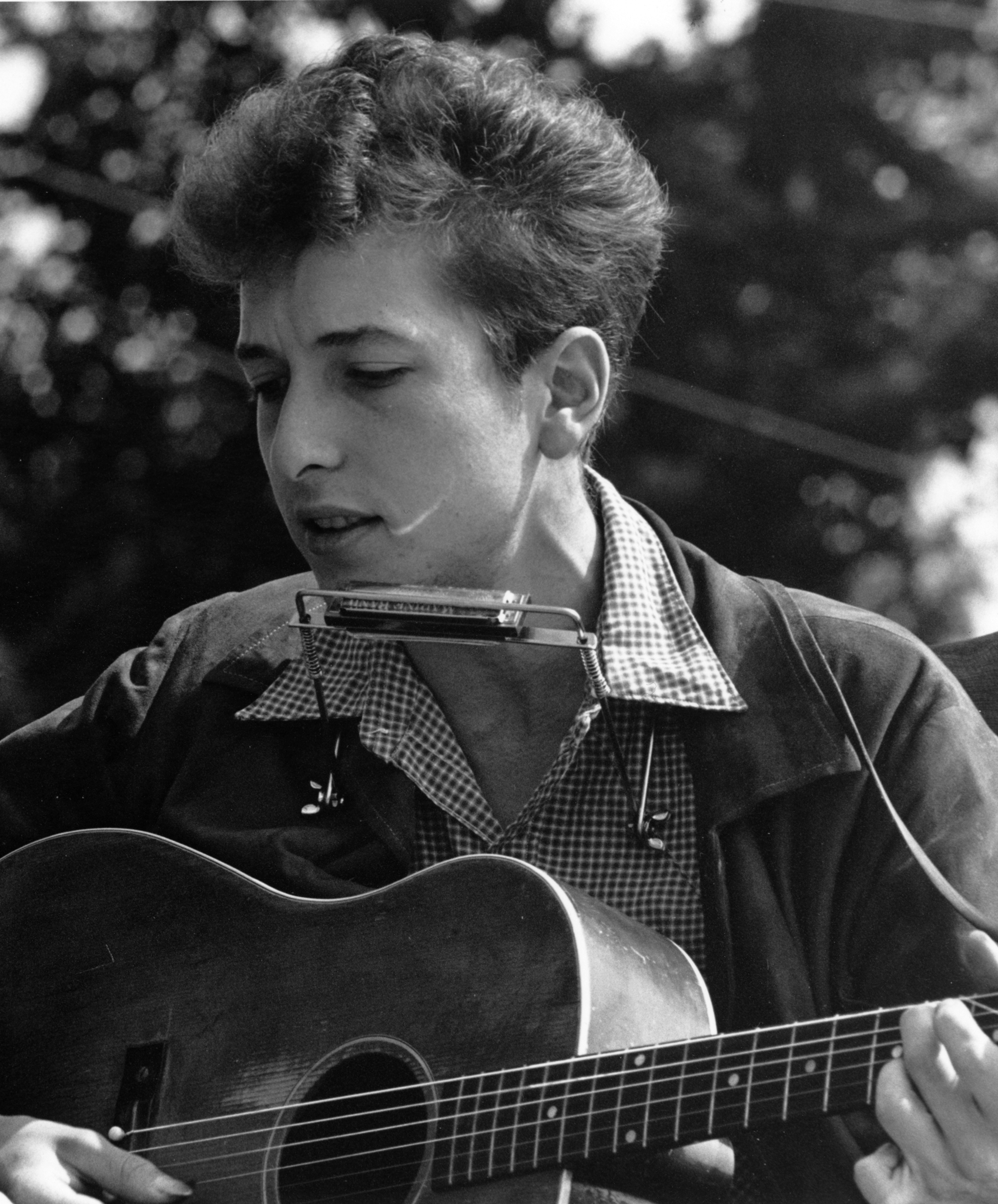|
Gerde's Folk City
Gerdes Folk City, sometimes spelled Gerde's Folk City, was a music venue in the West Village of Manhattan in New York City. Initially opened by owner Mike Porco as a restaurant called Gerdes, it eventually began to present occasional incidental music. It was first located at 11 West 4th Street (in a building which no longer exists), before moving in 1970 to 130 West 3rd Street. The club closed in 1987. On January 26, 1960, Gerdes turned into a music venue called The Fifth Peg, in cooperation with Izzy Young, the director of the Folklore Center. The Fifth Peg's debut bill was gospel folk singer Brother John Sellars and Ed McCurdy, writer of the anti-war classic " Last Night I Had the Strangest Dream". Porco and Young had a falling-out, and on June 1, 1960, Gerdes Folk City was officially born, with a bill featuring folk singers Carolyn Hester and Logan English. Gerdes Folk City was soon booked by English and folk enthusiast Charlie Rothschild (who later became Judy Collins' lon ... [...More Info...] [...Related Items...] OR: [Wikipedia] [Google] [Baidu] |
West Village
The West Village is a neighborhood in the western section of the larger Greenwich Village neighborhood of Lower Manhattan, New York City. The West Village is bounded by the Hudson River to the west and 14th Street (Manhattan), 14th Street to the north. The eastern boundary is variously cited as Greenwich Avenue, Seventh Avenue (Manhattan), Seventh Avenue, or Sixth Avenue, while the southern boundary is either Houston Street or Christopher Street. The West Village is part of Manhattan Community Board 2, Manhattan Community District 2, and is patrolled by the 6th Precinct of the New York City Police Department. Residential property sale prices in West Village are among the most expensive in the United States, typically exceeding US in 2017. History The designation "West Village" emerged amidst successful preservation efforts in the 1950s–1960s. Residents and preservationists began using the designation "West Village" to distinguish this section of Greenwich Village from the ... [...More Info...] [...Related Items...] OR: [Wikipedia] [Google] [Baidu] |
The Cavern
The Cavern Club is a music venue on Mathew Street, Liverpool, England. The Cavern Club opened on 16 January 1957 as a jazz club, later becoming a centre of the rock and roll scene in Liverpool in the late 1950s and early 1960s. The club became closely associated with Merseybeat and regularly played host to the Beatles in their early years.. The Cavern Club closed in 1973 and was filled in during construction work on the Merseyrail underground rail loop. It reopened in 1984. It was temporarily closed again from 1989 to 1991, and has been open ever since. History of the Cavern Club Early history Alan Sytner, having been inspired by the jazz district in Paris where there were a number of clubs in cellars, returned to Liverpool and strove to open a club similar to the Le Caveau de la Huchette jazz club. He eventually found a fruit warehouse where people were leasing the cellar, which had been used as an air raid shelter in World War II. Tropical fruit used to be stored there a ... [...More Info...] [...Related Items...] OR: [Wikipedia] [Google] [Baidu] |
Brownie McGhee
Walter Brown "Brownie" McGhee (November 30, 1915 – February 16, 1996) was an American folk and Piedmont blues singer and guitarist, best known for his collaboration with the harmonica player Sonny Terry. Life and career McGhee was born in Knoxville, Tennessee, and grew up in Kingsport, Tennessee. At about the age of four he contracted polio, which incapacitated his right leg. His brother Granville "Stick" McGhee, who also later became a musician and composed the song " Drinkin' Wine Spo-Dee-O-Dee", was nicknamed for pushing young Brownie around in a cart. Their father, George McGhee, was a factory worker, known around University Avenue for playing guitar and singing. Brownie's uncle made him a guitar from a tin marshmallow box and a piece of board. McGhee spent much of his youth immersed in music, singing with a local harmony group, the Golden Voices Gospel Quartet, and teaching himself to play guitar. He also played the five-string banjo and ukulele and studied pian ... [...More Info...] [...Related Items...] OR: [Wikipedia] [Google] [Baidu] |
Sonny Terry
Saunders Terrell (October 24, 1911 – March 11, 1986), known as Sonny Terry, was an American Piedmont blues and folk musician, who was known for his energetic blues harmonica style, which frequently included vocal whoops and hollers and occasionally imitations of trains and fox hunts. Career Terry was born in Greensboro, Georgia. His father, a farmer, taught him to play basic blues harp as a youth. He sustained injuries to his eyes and went blind by the time he was 16, which prevented him from doing farm work, and was forced to play music in order to earn a living. Terry played " Camptown Races" to the plow horses which improved the efficiency of farming in the area. He began playing blues in Shelby, North Carolina. After his father died, he began playing with Piedmont blues–style guitarist Blind Boy Fuller. When Fuller died in 1941, Terry established a long-standing musical relationship with Brownie McGhee, and they recorded numerous songs together. The duo became we ... [...More Info...] [...Related Items...] OR: [Wikipedia] [Google] [Baidu] |
The Weavers
The Weavers were an American folk music quartet based in the Greenwich Village area of New York City originally consisting of Lee Hays, Pete Seeger, Ronnie Gilbert, and Fred Hellerman. Founded in 1948, the group sang traditional folk songs from around the world, as well as blues, gospel music, children's songs, labor songs, and American ballads. The group sold millions of records at the height of their popularity, including the first folk song to reach No. 1 on popular music charts, their recording of Lead Belly's "Goodnight, Irene." Despite their popularity, the Weavers were blacklisted during much of the 1950s. During the Red Scare, members of the group were followed by the FBI and denied recording and performance opportunities, with Seeger and Hays called in to testify before the House Committee on Un-American Activities. Pete Seeger left the group in 1958. His tenor and banjo part was covered in succession by Erik Darling, Frank Hamilton (musician), Frank Hamilton and fina ... [...More Info...] [...Related Items...] OR: [Wikipedia] [Google] [Baidu] |
10,000 Maniacs
10,000 Maniacs are an American alternative rock band founded in 1981. They have released nine studio albums, six EPs, and five live albums. They achieved their most significant success between 1987 and 1993, when they released four albums that charted in the top 50 in the US: '' In My Tribe'' (1987), '' Blind Man's Zoo'' (1989), '' Our Time in Eden'' (1992), and the live album ''MTV Unplugged'' (1993). After the recording (but before the release) of ''MTV Unplugged'', original lead singer and songwriter Natalie Merchant left the band to pursue a solo career, while the remaining members continued the band. History Early years The band was formed as Still Life in 1981 in Jamestown, New York, by Dennis Drew (keyboards), Steven Gustafson (bass), Chet Cardinale (drums), Robert Buck (guitar), and Buck's ex-wife Terri Newhouse (vocals). Gustafson invited Natalie Merchant, who was 17 at the time, to do some vocals. John Lombardo, who was in a band named The Mills (along with brother ... [...More Info...] [...Related Items...] OR: [Wikipedia] [Google] [Baidu] |
Pete Seeger
Peter Seeger (May 3, 1919 – January 27, 2014) was an American singer, songwriter, musician, and social activist. He was a fixture on nationwide radio in the 1940s and had a string of hit records in the early 1950s as a member of The Weavers, notably their recording of Lead Belly's "Goodnight, Irene", which topped the charts for 14 weeks in 1950. Members of the Weavers were blacklisted during the McCarthyism, McCarthy Era. In the 1960s, Seeger re-emerged on the public scene as a prominent singer of protest song, protest music in support of nuclear disarmament, international disarmament, civil rights, workers' rights, Counterculture of the 1960s, counterculture, environmentalism, environmental causes, and ending the Vietnam War. Among the prolific songwriter's best-known songs are "Where Have All the Flowers Gone?" (with additional lyrics by Joe Hickerson), "If I Had a Hammer (The Hammer Song)" (with Lee Hays of the Weavers), "Kisses Sweeter than Wine" (also with Hays), and ... [...More Info...] [...Related Items...] OR: [Wikipedia] [Google] [Baidu] |
Alternative Rock
Alternative rock (also known as alternative music, alt-rock or simply alternative) is a category of rock music that evolved from the independent music underground of the 1970s. Alternative rock acts achieved mainstream success in the 1990s with the likes of the grunge subgenre in the United States, and the Britpop and shoegaze subgenres in the United Kingdom and Ireland. During this period, many record labels were looking for "alternatives", as many Arena rock, corporate rock, hard rock, and glam metal acts from the 1980s were beginning to grow stale throughout the music industry. The emergence of Generation X as a Culture, cultural force in the 1990s also contributed greatly to the rise of alternative music. "Alternative" refers to the genre's distinction from mainstream or arena rock, commercial rock or pop. The term's original meaning was broader, referring to musicians influenced by the musical style or independent, DIY ethic, DIY ethos of late-1970s punk rock.di Perna, A ... [...More Info...] [...Related Items...] OR: [Wikipedia] [Google] [Baidu] |
Blues
Blues is a music genre and musical form that originated among African Americans in the Deep South of the United States around the 1860s. Blues has incorporated spiritual (music), spirituals, work songs, field hollers, Ring shout, shouts, chants, and rhymed simple narrative ballad (music), ballads from the African-American culture. The blues form is ubiquitous in jazz, rhythm and blues, and rock and roll, and is characterized by the Call and response (music), call-and-response pattern, the blues scale, and specific chord progressions, of which the twelve-bar blues is the most common. Blue notes (or "worried notes"), usually thirds, fifths or sevenths flattened in Pitch (music), pitch, are also an essential part of the sound. Blues shuffle note, shuffles or walking bass reinforce the trance-like rhythm and form a repetitive effect known as the groove (popular music), groove. Blues music is characterized by its lyrics, Bassline, bass lines, and Instrumentation (music), instrumen ... [...More Info...] [...Related Items...] OR: [Wikipedia] [Google] [Baidu] |
Punk Rock
Punk rock (also known as simply punk) is a rock music genre that emerged in the mid-1970s. Rooted in 1950s rock and roll and 1960s garage rock, punk bands rejected the corporate nature of mainstream 1970s rock music. They typically produced short, fast-paced songs with hard-edged melodies and singing styles with stripped-down instrumentation. Punk rock lyrics often explore anti-establishment and Anti-authoritarianism, anti-authoritarian themes. Punk embraces a DIY ethic; many bands self-produce recordings and distribute them through independent record label, independent labels. The term "punk rock" was previously used by American Music criticism, rock critics in the early 1970s to describe the mid-1960s garage bands. Certain late 1960s and early 1970s Detroit acts, such as MC5 and Iggy and the Stooges, and other bands from elsewhere created out-of-the-mainstream music that became highly influential on what was to come. Glam rock in the UK and the New York Dolls from New York ha ... [...More Info...] [...Related Items...] OR: [Wikipedia] [Google] [Baidu] |
Folk Rock
Folk rock is a fusion genre of rock music with heavy influences from pop, English and American folk music. It arose in the United States, Canada, and the United Kingdom in the mid-1960s. In the U.S., folk rock emerged from the folk music revival. Performers such as Bob Dylan and the Byrds—several of whose members had earlier played in folk ensembles—attempted to blend the sounds of rock with their pre-existing folk repertoire, adopting the use of electric instrumentation and drums in a way previously discouraged in the U.S. folk community. The term "folk rock" was initially used in the U.S. music press in June 1965 to describe the Byrds' music. The commercial success of the Byrds' cover version of Dylan's " Mr. Tambourine Man" and their debut album of the same name, along with Dylan's own recordings with rock instrumentation—on the albums '' Bringing It All Back Home'' (1965), '' Highway 61 Revisited'' (1965), and '' Blonde on Blonde'' (1966)—encouraged other folk ... [...More Info...] [...Related Items...] OR: [Wikipedia] [Google] [Baidu] |
Rock 'n' Roll
Rock and roll (often written as rock & roll, rock-n-roll, and rock 'n' roll) is a Genre (music), genre of popular music that evolved in the United States during the late 1940s and early 1950s. It Origins of rock and roll, originated from African American music such as jazz, rhythm and blues, boogie-woogie, electric blues, gospel music, gospel, and jump blues, as well as from country music. While rock and roll's formative elements can be heard in blues records from the 1920s and in country records of the 1930s,Peterson, Richard A. Creating Country Music: Fabricating Authenticity' (1999), p. 9, . the genre did not acquire its name until 1954. According to the journalist Greg Kot, "rock and roll" refers to a style of popular music originating in the United States in the 1950s. By the mid-1960s, rock and roll had developed into "the more encompassing international style known as rock music, though the latter also continued to be known in many circles as rock and roll".Kot, Greg"Rock ... [...More Info...] [...Related Items...] OR: [Wikipedia] [Google] [Baidu] |







